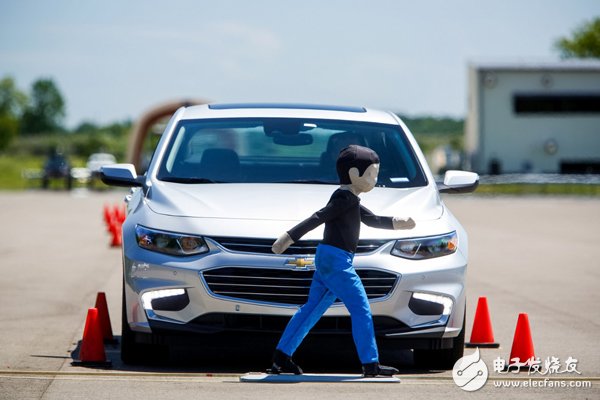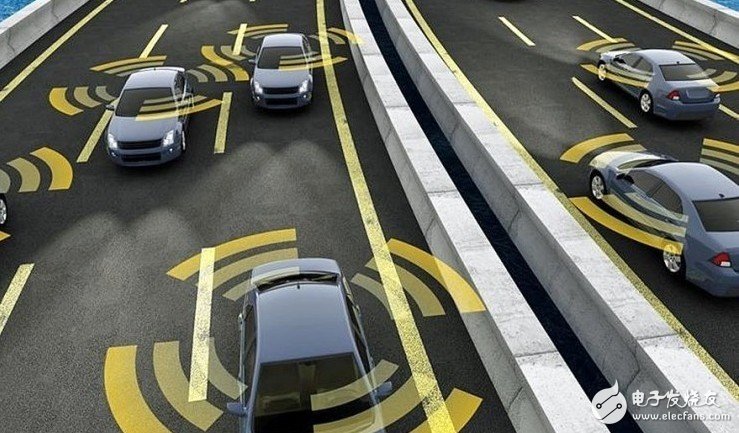More self-driving cars enter the test phase
Behind the auto-driving boom, it is time to move forward and evaluate all aspects of the indicators in order to more effectively advance the next step. This is the result of the joint promotion of the entire industry chain. Behind the prototype of a city road test, it is a series of products from chips, sensors, vehicle hardware, to algorithms, integrated solutions, to travel services. the process of.
Entering the new year, the intelligent revolution of the car continues to advance at all levels. This time, on the specific autonomous driving road test, Beijing took the lead in releasing the first official version of the automatic driving road test "exam outline".
Since the beginning of the industry in Beijing at the end of last year, it has taken the lead in introducing guidelines and management rules for driving road tests for self-driving vehicles. It is the first to loosen the policy and explicitly allow and support auto-driving vehicles for road testing, February 2 The Beijing Municipal Economic Information Commission, the Municipal Traffic Commission, and the Public Security Traffic Management Bureau of the Municipal Public Security Bureau issued the “Contents and Methods for the Evaluation of Road Test Capability of Beijing Autopilot Vehicles (Trial)†(hereinafter referred to as “the road test capability†"Assessment"") and "Technical Requirements for the Closed Test Site of Self-driving Vehicles in Beijing (Trial)" (hereinafter referred to as "Technical Requirements for Closed Test Sites"), further clarify the specific landing of the automatic driving test, thereby The development of Beijing's autonomous driving may indeed be regarded as a "law". This "law" is a law and a method.

It is understood that in the "exam", vehicles must not only complete dynamic driving tasks such as meeting cars, over-wide doors, narrow roads, ramps, and start-ups, but also assessing the cognitive ability of roads and markings. Compliance with traffic regulations. The evaluation score is 100 points, and the deduction system is adopted. After 80 points or more, the test is passed, and the test threshold is stricter than the human test driver's license.
The official version of the autopilot capability evaluation standard is undoubtedly significant for the current revolution in the automotive industry. This means that more autonomous vehicles will enter the city test, and we will have more expectation for the real arrival of the autonomous driving and driverless era.
Indeed, in the past one or two years, China’s enthusiasm for the development of intelligent networked vehicles has continued to rise. From traditional car companies to technology and electronics companies, as well as communications and Internet companies, to the government level, they are actively promoting the intelligent progress of automobiles. . In the research and development of key technologies and the marketization of independent products, as well as in the layout of the industrial chain, in the test and demonstration, etc., some breakthroughs have been made.

The United States is also accelerating the revolution in autonomous driving tests. According to foreign media reports, the new American Smart Driving Demonstration Zone - American Center for Mobility will be the ultimate testing ground for real-life testing and verification of autonomous vehicles.
To significantly reduce casualties in highway accidents and provide new options for transportation options for all parties, engineers must first improve the performance of Autopilot Interconnected (A/C) vehicles. Sensors, servos, and software for autonomous driving (A/C) vehicles are currently under development and have accumulated millions of miles of test miles, but public roads have been limited to provide engineers with limited assistance.
In this context, Ford, the US Highway Traffic Safety Administration (NHTSA), and the University of Michigan engineer John Maddox launched a brainstorming: Why can't we turn the US industrial base into a test of future vehicle development? What about the field?
It is reported that the US mobile travel center is still under construction and will be opened in December 2017 as planned (the author's English article was published in November, and the center officially opened in December 17). The total cost of the center is approximately $100 million and covers an area of ​​approximately 500 acres, an order of magnitude (10 times) greater than Mcity, and the test potential is three orders of magnitude higher. Upon completion, experts from the government, companies and universities will gather at the ACM Center to jointly develop autonomous driving/connected vehicles, develop regulatory policies, and further advance the advancement of driverless automotive disciplines. At this stage, 70% of the car research and development power in the United States, and 63 of the top 100 auto suppliers in North America are located in Michigan. The US Mobile Travel Center meets the urgent needs of these auto manufacturers.
Car companies and related companies are also active in road test. In the past five months, Mercedes-Benz has promoted a test project called Intelligent World Drive. A small team drove a special Mercedes-Benz luxury sedan S450L to five different countries on five continents, with the goal of actually driving. Collect real-life traffic information from different cities in different regions, learn about roads, driving vehicles and corresponding legal regulations in different regions of the world, and plan to put these into new autopilot systems.
The Mercedes team observed that different traffic signs and climatic environments between large cities may have an impact on autonomous vehicles. For example, some crossroads in Shanghai are quite large and the ground does not mark lanes, and the traffic light timer in Shanghai is also quite special; driving in Melbourne may encounter a turning method called hook turn, driving left The driver needs to wait for the green light on the right turn; the Cape Town sands in South Africa are easy to cover the lane markings.
Allowing autonomous vehicles to drive tests in real-world urban scenes is critical to the next step forward, which is why manufacturers, including Waymo and manufacturers like Waymo, are increasingly inclined to let test vehicles travel in cities because humans are human after all. Drivers driving and relying on algorithms to drive cars are still two different ways. Automated driving is completely in accordance with traffic regulations and road rules, but human drivers are not always the case, which is prone to unforeseen algorithms.
It seems that behind the auto-driving boom, it is time for the actual development and evaluation of various indicators to more effectively advance the next step. Obviously, the road to intelligentization and automation of automobiles is not a company or a single field. It is the result of the upstream and downstream of the industry chain, the companies in many sub-areas, and the government and the whole society. Behind the prototypes that are being tested on urban roads, there is a highly integrated process of the entire chain from chips, sensors, vehicle hardware, to algorithms, integrated solutions, to travel services.
110V Gear Motor,Ac Motor Low Rpm,Customized Ac Gear Motor,Customized Ac Geared Motor
NingBo BeiLun HengFeng Electromotor Manufacture Co.,Ltd. , https://www.hengfengmotor.com